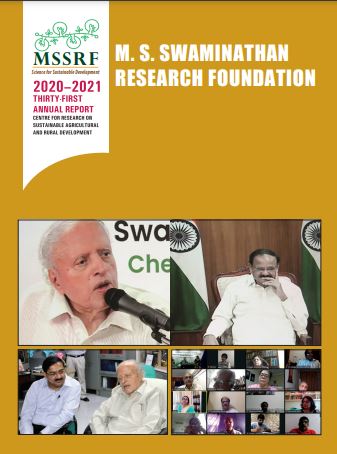MSSRF has undertaken several environmental and farmer’s welfare projects using GIS and RS to locate, quantify, measure and monitor lands. The projects are focused on restoring the mangrove atlas, water resource management, pest management, and monitoring rise in sea level
Collaborating with the Indian Space Research Organisation (ISRO), MSSRF has been working on updating the mangrove atlas for the Tamil Nadu coast as well as quantifying mangrove carbon using RS. Geographic Information System (GIS) and Remote Sensing (RS) are two of the key tools used in this project.
Firstly, these technologies are used to locate the land-using satellite imaging. Once the patches of land are identified and the plan formulated, the process of plantation begins. RS is then used to constantly monitor the health of the plants in order to examine the rate of growth, its response to external factors, etc. Finally, GIS is used to quantify the number of hectares restored.
GIS and RS technology is also used in carbon tracing. The carbon stored in one Pichavaram mangrove is discerned using RS, and it is then extrapolated to the entire forest through allometric equations. Hence, RS provides accurate measurements and a carbon budget for the entire forest with an accuracy of 80 percent.
With its quick and precise imaging, GIS and RS have helped in overcoming many challenges. “With the restoration project, it is very difficult to traverse mangrove forests because they are very dense forests and the sand is also very muddy,” explains Nagarajan R, Head – GIS & Remote Sensing at MSSRF. These conditions make it difficult for forest officials to take surveys, monitor, manage, locate degrading areas and wastelands, and so on. “When using remote sensing, it not only makes the process easier, but also less labourious and time consuming,” he added.
The Water Resource Management project in collaboration with the Department of Rural Development, Government of India, makes use of the technology to prepare development maps for village-level planning. This is done by collecting non-spatial data that is later converted into different thematic maps to determine the water deficiency rates for each village and find suitable action plans.
GIS and RS are also used in The Pest-disease Advance Notification and Need-based Agriculture Information Application (PANNAI App). The app uses these technologies to produce maps of agricultural lands in order to locate, monitor, identify and provide forewarnings about lands infested with pests and diseases. Moreover, MSSRF is working on climate change where GIS and RS are used to monitor the rise in sea levels and calculate inundation probabilities. The technologies are used to locate the sea level rise, identify the area that will be inundated, assess the area’s physical vulnerability, measure crop yields, map soil types and crops, etc. These estimates help departments and government agencies to take appropriate measures to manage the forecasted event.
MSSRF has been restoring mangroves for over 30 years, and has also been working on another environmental welfare project where GIS and RS are predominantly used. Read our GIS and RS technology-related Outcome Stories here:
https://www.mssrf.org/wp-content/uploads/2022/08/Pannai-App.pdf
https://www.mssrf.org/wp-content/uploads/2022/08/mangroves.pdf
*With inputs from Mr. R. Nagarajan, Head-GIS & Remote Sensing, MSSRF Chennai.

